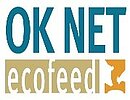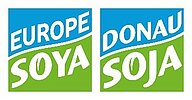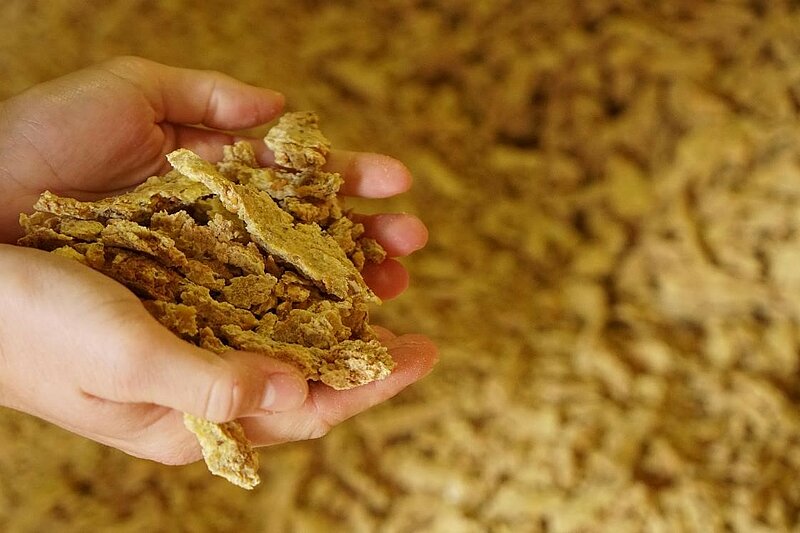Recommendations for using soya-based feedstuffs in pig husbandry
Problem
Soya beans are rich in protein with a valuable composition of amino acids but also contain anti-nutritive substances (trypsin inhibitors) and approximately 20 % fat, which can limit the applicability in organic pig husbandry.
Solution
If soya beans are pressed and heat treated, the products can be used in organic feed rations for pigs. Critical points in ration planning must be considered to achieve a high meat quality.
Benefits
Short soya supply chains are in line with the principles of organic agriculture and help to enable farmers to meet requirements of organic farming regulations or private labelling systems.
Applicability box
Geographical coverage
For all livestock farms which have access to region-ally grown organic soya feedstuff
Application time
Any time
Required time
Time needed to feed pigs
Period of impact
Immediate impact
Equipment
Special equipment is needed to process soybeans into feed. Further equipment on-farm for storage and mixing is needed.
Best in
Farms with pig production in proximity to soya pro-duction
Practical Recommendations
- Soya beans need to be heat treated to enable digestion by pigs or poultry. Professional processing technology is required to apply a heat treatment of the right quality and intensity. This is essential to
preserve protein quality. - De-fatting of soya beans helps to increase shelf life and the amount that can be fed to sows, piglets and pigs. A mechanical press reduces the fat content down to approximately 7-10 %, see table 1. The product is called soya cake (see figure 1). Before feeding it to pigs, it needs to be heat treated.
- Soya cake or full-fat soya beans are best in growth phases with high energy needs: nursing sows, rearing piglets and in the first fattening phase (share in total feed <15 % DM), see table 2.
- The fat of soya beans contains relatively high levels of polyene fatty acids. For achieving lean meat of high quality, the use of soya cake is limited during the final fattening phase (approximately 5 % of DM). Full-fat soybeans should be avoided during this phase.
- If soya cake is the main protein feed during the fattening period, the share of corn should be lower than 20 %. Otherwise, lean meat of high quality is not achievable.
Table 1: Average composition of soybean feedstuff. Source: ITAB
Values based on fresh matter | Soybean | Soya cake |
Dry matter | 90.7 % | 94.4 % |
Crude protein | 37.6 % | 46.2 % |
Crude fibre | 4.2 % | 5.9 % |
Fat | 17.5 % | 8.7 % |
Energy | 4990 kcal/kg | 4780 kcal/kg |
Net energy pig | 2650 kcal/kg | 2470 kcal/kg |
Metabolizable energy broiler | 3170 kcal/kg | 2870 kcal/kg |
Lysine | 23.4 g/kg | 26 g/kg |
Threonine | 15.1 g/kg | 17.9 g/kg |
Methionine | 5.4 g/kg | 6.6 g/kg |
Cysteine | 5.6 g/kg | 7.2 g/kg |
Methionine + cysteine | 11 g/kg | 13.8 g/kg |
Tryptophan | 4.8 g/kg | 6.3 g/kg |
Table 2: Recommendations for using soya feed in organic pig husbandry. Source: BioAustria 2011, see weblinks
% of DM in feed | Piglets | Sows | Fattening | ||
Pregnant | Nursing | Start | Finish | ||
Soybeans heat-treated | 10 | 5 | 10 | 10 | 5 |
Soya cake heat-treated, de-fattened | 15-20 | 5 | 15 | 10-15 | 5-10 |
Further information
Reading
- For more practice abstracts on organic pig husbandry, go to the Organic Farm Knowledge platform > Search Toolbox > Select “By type: Practice Abstracts” and “By theme: Pigs”
- For more practice abstracts from Donau Soja, go to the Organic Farm Knowledge platform > Search Toolbox > Select “By institution: Donau Soja”
- Bernet T, Recknagel T, Asam T, Messmer M (2016): Biosoja aus Europa. Empfehlungen für den Anbau und den Handel von biologischer Soja in Europa. Research Institute of Organic Agriculture (FiBL), Frick.
- Further information on organic farming can be found on the Organic Farm Knowledge platform.
- LFI Oberösterreich, BioAustria, LFZ Raumperg-Gumpenstein, LK OÖ, 2011. Bio-Schweinefütterung. Linz, Austria. (German)
- Website of the Bavarian State Research Center for Agriculture (LfL) (German)
About this practice abstract and OK-Net EcoFeed
Publishers:Verein Donau Soja,
AT1010Wien,
Phone +43 1 512 17 44 10,
office@donausoja.org,
www.donausoja.orgResearch Institute of Organic Agriculture (FiBL),
CH5070Frick,
Phone +41 62 865 72 72,
info.suisse@fibl.org,
www.fibl.orgIFOAM Organics Europe,
BE1000Brussels,
Phone +32 2 280 12 23,
www.organicseurope.bio,
www.organicseurope.bio
Review: Lindsay Whistance, Organic Research Centre, UK
Contact: rittler@donausoja.org
Permalink: https://organic-farmknowledge.org/tool/37897
https://orgprints.org/view/projects/OKNetEcoFeed.html
This practice abstract was elaborated in the Organic Knowledge Network on Monogastric Animal Feed project. The project is running from January 2018 to December 2020. The overall aim of OKNet EcoFeed is to help farmers, breeders and the organic feed processing industry in achieving the goal of 100% use of organic and regional feed for monogastrics.
Project website: https://ok-net-ecofeed.eu/
IFOAM Organics Europe (project coordinator), BE; Aarhus University (ICROFS), DK; Organic Research Centre (ORC), UK; Institut Technique de l'Agriculture Biologique (ITAB), FR; Research Institute of Organic Agriculture (FiBL), CH; Bioland, DE; Associazione Italiana perl'Agricoltura Biologica (AIAB), IT; Donau Soja DS, AT; Swedish University of Agricultural Sciences, SE; ECOVALIA, ES; Soil Association, UK.



This project has received funding from the European Union’s Horizon 2020 research and innovation programme under grant agreement No 773911. This communication only reflects the author’s view. The Research Executive Agency is not responsible for any use that may be made of the information provided. The authors and editors do not assume responsibility or liability for any possible factual inaccuracies or damage resulting from the application of the recommendations in this practice abstract
